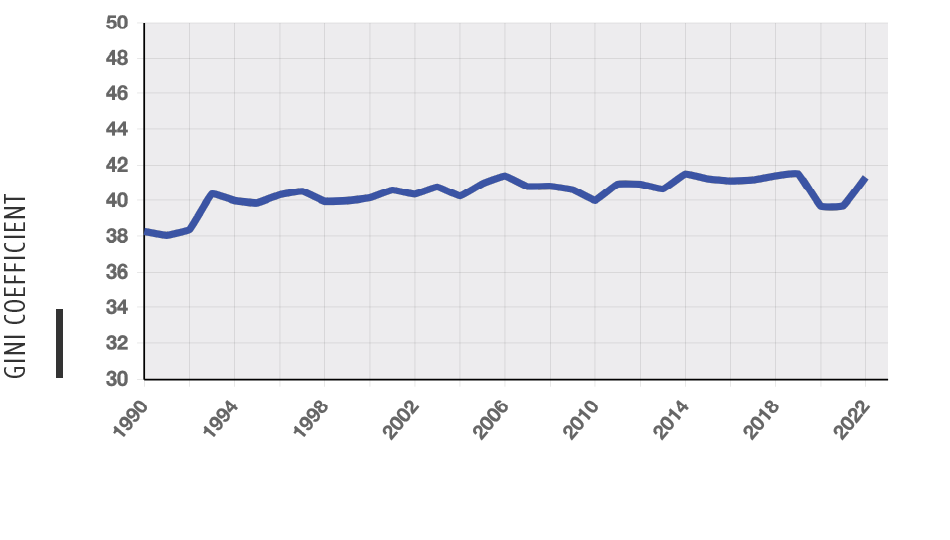Income inequality
Income “Gini” coefficient (net of government taxes and transfer programs). This is an index that ranges from 0-100 where higher numbers indicate more inequality.
How does the US rank globally?
- Specific Measure: Income “Gini” coefficient
- Percentage of countries the US outperforms: 22% (out of 27 countries)
- International Rank Trend: Worsening
National Trend Worsening

For more information about data sources and treatments, download the Data Notes.
Vivamus sagittis lacus vel augue laoreet rutrum faucibus dolor auctor.
Sed posuere consectetur est at lobortis. Sed posuere consectetur est at lobortis. Praesent commodo cursus magna, vel scelerisque nisl consectetur et. Aenean lacinia bibendum nulla sed consectetur. Donec sed odio dui. Maecenas sed diam eget risus varius blandit sit amet non magna. Cras justo odio, dapibus ac facilisis in, egestas eget quam. Cum sociis natoque penatibus et magnis dis parturient montes, nascetur ridiculus mus. Praesent commodo cursus magna, vel scelerisque nisl consectetur et. Donec id elit non mi porta gravida at eget metus.